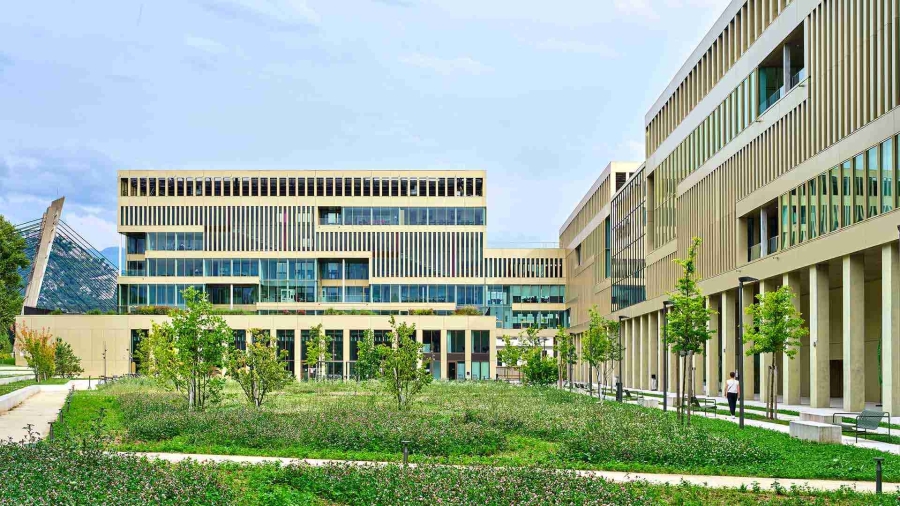A first-of-its-kind study finds more than 2 million new jobs and up to 141 million additional job years can be created in Europe and the United States alone by adopting readily available clean energy technologies in new and retrofitted buildings. The results come from a research collaboration between the Boston University Institute for Global Sustainability (IGS) and the Schneider ElectricTM Sustainability Research Institute (SRI).
Published in the June 2023 edition of The Electricity Journal, the study is the first to estimate job creation in low-carbon “buildings of the future” at such a granular level. Doing so could make these findings more useful and relevant for informing specific building projects. Taking a micro-scale view, it looks at deploying rooftop solar panels, heat pumps, and batteries for self-produced renewable energy based on six building archetypes. These span residential, hospital, hotel, office, retail, and education in regions of North America, Europe, and Asia.
“It is growingly acknowledged that, thanks to modern technologies, it is now feasible to rapidly transition buildings to net-zero” explains Vincent Petit, Senior Vice President of Climate and Energy Transition Research at Schneider Electric and Head of SRI. “What we often do not realize is that such a transition comes with significant socio-economic benefits. This research is another demonstration of this fact.”
The open-access paper, “Building a Green Future: Examining the Job Creation Potential of Electricity, Heating, and Storage in Low-Carbon Buildings,” expands on research from SRI that demonstrated over 60% carbon reduction and 70% energy savings implementing these low-carbon solutions.
Key findings:
- Region and building type are key considerations for job creation potential. For residential, approximately 0.05 jobs can be created per building. For commercial buildings, it ranges between 0.3 and 4.7 jobs each. Due to the number of combined residential and commercial buildings, the job creation possibility surpasses millions.
- The greatest job creation potential is in using heat pumps for large buildings and battery storage in regions and building types with surplus solar, allowing for storage.
- Although the study’s job estimates would be fully realized over time in alignment with global net-zero goals targeting 2050, the social benefit is significant in the shorter term for policy and decision-makers.
“Employment is often a polarizing topic at the center of the transition to a net-zero economy, mired in uncertainty about emerging opportunities in green energy,” stated Benjamin Sovacool, Director, Boston University Institute for Global Sustainability and Professor, Earth & Environment, College of Arts & Sciences. “This study brings greater detail to the sizable potential for new jobs created by low-carbon buildings, a compelling co-benefit of decarbonization that could have the power to ease social and economic concerns and positively shape climate policy.”
Schneider Electric
Thomas A. Kwan, Director of Sustainability Research at the Schneider ElectricTM Sustainability Research Institute
Vincent Petit, SVP Climate and Energy Transition Research, Head of the Schneider ElectricTM Sustainability Research Institute
Boston University
Benjamin K. Sovacool, Professor of Earth and Environment at Boston University, Founding Director of the Institute for Global Sustainability, Professor of Energy Policy at the Science Policy Research Unit (SPRU) at the University of Sussex Business School
Darrick Evensen, Associate Professor in environmental politics at the University of Edinburgh and Senior Research Scientist at the Institute for Global Sustainability at Boston University














